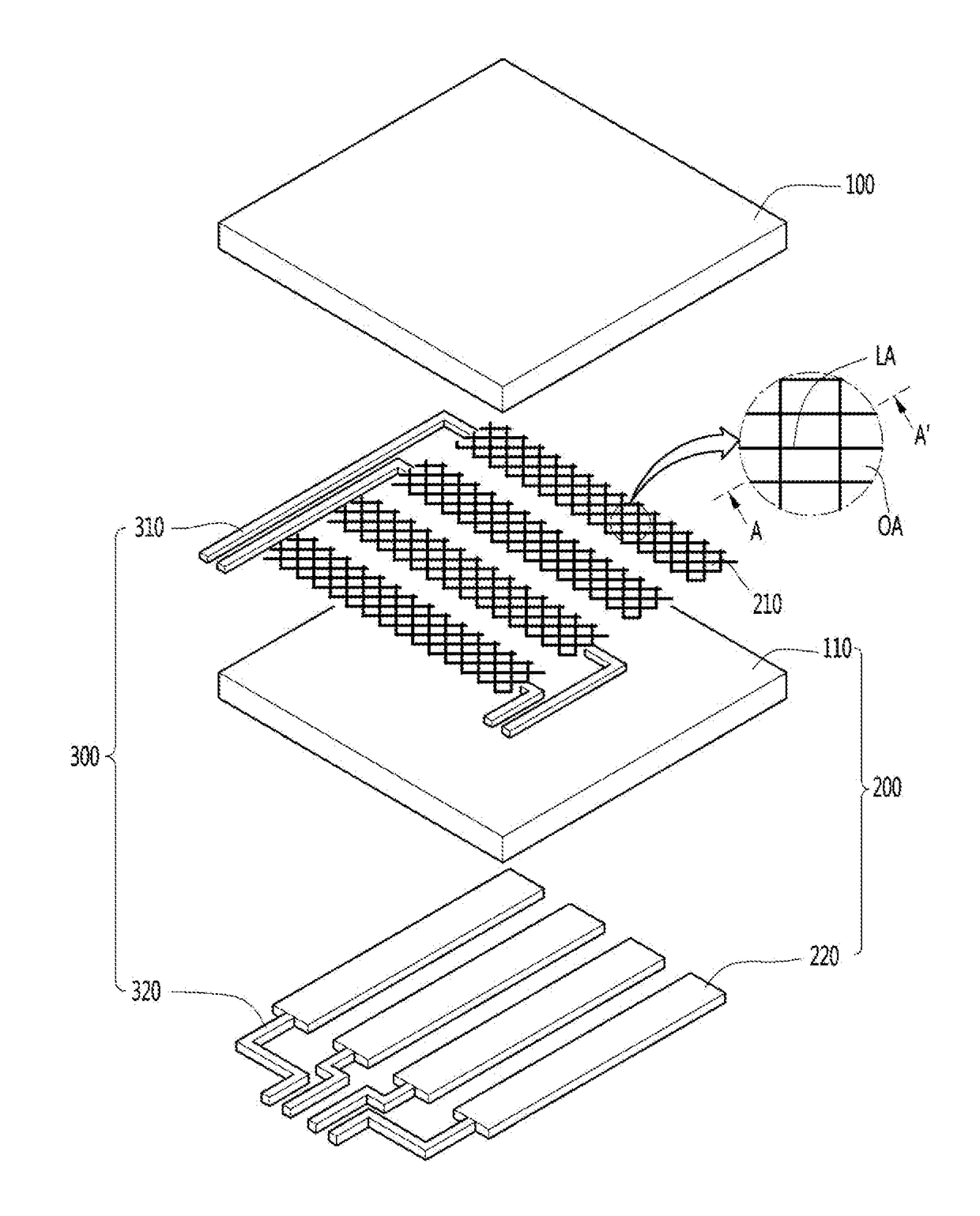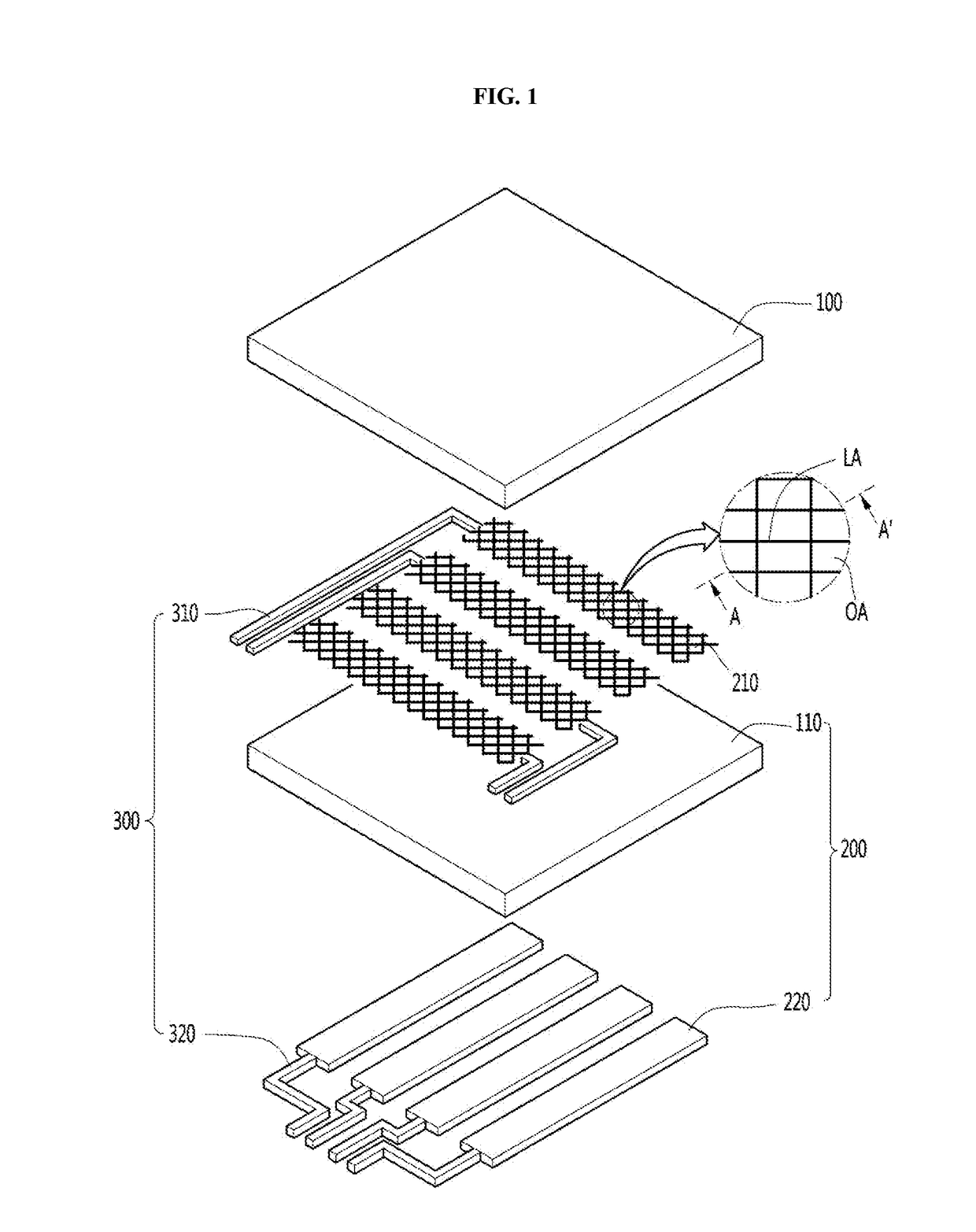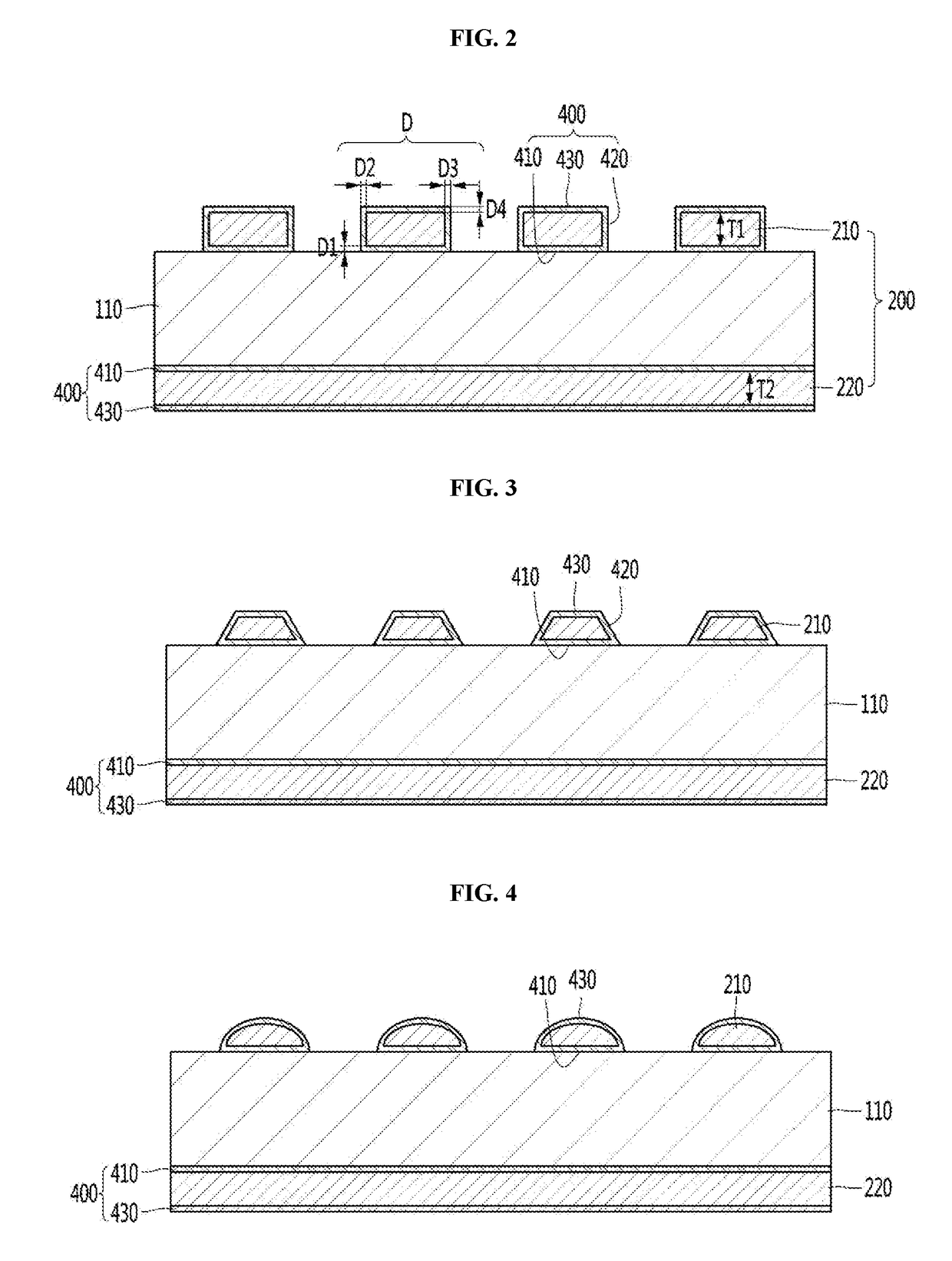Touch window
a technology of touch window and transparent electrode, which is applied in the field of touch window, can solve the problems of high resistance, high cost, and physical easy to be hit by indium tin oxide (ito), which is most widely used as a transparent electrode achieves the effects of preventing the appearance of deterioration, and improving the reliability of the touch window
- Summary
- Abstract
- Description
- Claims
- Application Information
AI Technical Summary
Benefits of technology
Problems solved by technology
Method used
Image
Examples
first embodiment
[0040]FIGS. 1 and 6 are views of a touch window according to a
[0041]Referring to FIG. 1, a touch window according to a first embodiment may include a cover substrate 100, a substrate 110, a sensing electrode 200, and a wired electrode 300.
[0042]The cover substrate 100 may be rigid or flexible.
[0043]For example, the cover substrate 100 may include glass or plastic.
[0044]In detail, the cover substrate 100 may include chemically reinforced or heat-strengthened glass such as soda lime glass or aluminosilicate glass, reinforced or flexible plastic such as polyimide (PI), polyethylene terephthalate (PET), propylene glycol (PPG), polycarbonate (PC), and the like, or sapphire.
[0045]Also, the cover substrate 100 may include an optically isotropic film. For example, the cover substrate 100 may include cyclic olefin copolymer (COC), a cyclic olefin polymer (COP), an optically isotropic polycarbonate (PC), or an optically isotropic polymethyl methacrylate (PMMA).
[0046]The sapphire has excellent...
second embodiment
[0132]Referring to FIG. 7, in a touch window a first sensing electrode 210 and a second sensing electrode 220 may be respectively disposed on one surface and the other surface of a substrate 110, i.e., both surfaces of the substrate 110. Thus, since all of the first sensing electrode 210 and the second sensing electrode 220 are disposed on one substrate 110, the touch window may be reduced in entire thickness.
[0133]That is, in the touch window according to this embodiment, since an adhesion layer and one substrate are omitted to reduce the entire thickness of the touch window when compared with a structure in which sensing electrodes 210 are respectively disposed on the separate substrates.
[0134]Each of the first and second electrodes 210 and 220 disposed on both surfaces of the substrate 110, i.e., each of the first sensing electrode 210 disposed on one surface of the substrate 110 and / or the second sensing electrode 220 disposed on the other surface of the substrate 110 may have ...
third embodiment
[0190]Referring to FIG. 10, in a touch window a sensing electrode 200, a wired electrode 300, and a printed circuit board 250 may be disposed on a substrate 110. That is, the substrate 110 may be a support substrate.
[0191]The wired electrode 300 may be connected to the sensing electrode 200 to extend to an unavailable area UA and then be connected to the printed circuit board 250 on the unavailable area UA.
[0192]FIGS. 11 and 13 are cross-sectional views of the touch window according to the third embodiment.
[0193]Referring to FIG. 11, a reflection prevention layer 400 may be disposed on the sensing electrode 200. In detail, the reflection prevention layer 400 may be disposed on at least one surface of one surface and the other surface of the sensing electrode 200. In more detail, the reflection prevention layer 400 may be disposed on each of one surface and the other surface of the sensing electrode 200.
[0194]Referring to FIG. 11, the reflection prevention layer 400 may include a fi...
PUM
 Login to View More
Login to View More Abstract
Description
Claims
Application Information
 Login to View More
Login to View More - R&D
- Intellectual Property
- Life Sciences
- Materials
- Tech Scout
- Unparalleled Data Quality
- Higher Quality Content
- 60% Fewer Hallucinations
Browse by: Latest US Patents, China's latest patents, Technical Efficacy Thesaurus, Application Domain, Technology Topic, Popular Technical Reports.
© 2025 PatSnap. All rights reserved.Legal|Privacy policy|Modern Slavery Act Transparency Statement|Sitemap|About US| Contact US: help@patsnap.com



